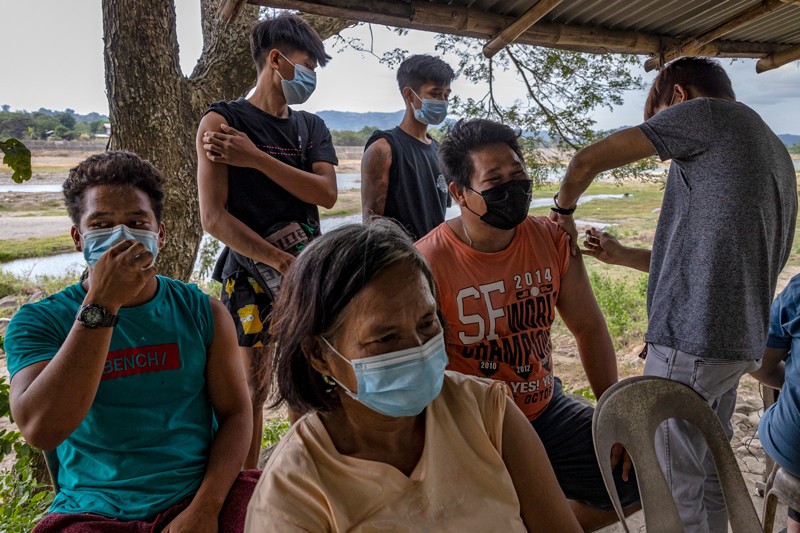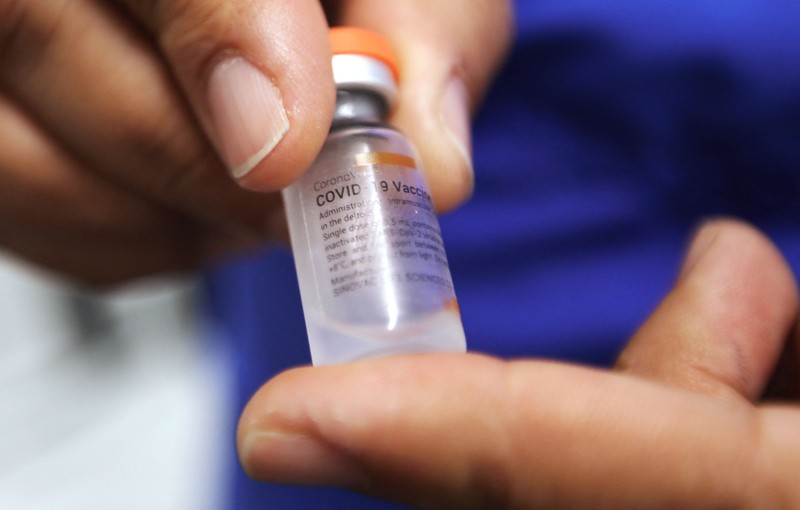On 11 January, just seven weeks after the Omicron variant was first reported, the World Health Organization (WHO) warned of a “tidal wave” of infection washing from west to east across the world. Fifty of the 53 countries in Europe and central Asia had reported cases of Omicron, said Hans Henri Kluge, the WHO’s regional director for Europe.
Countries would have to cope as best they could, he said, guided by their individual epidemiological situation, available resources, vaccination-uptake status and socioeconomic context. In recent weeks, countries in Europe and the United States have have felt the full force of the Omicron wave; in the United Kingdom, which has reported most cases, daily COVID-19 cases peaked at more than 160,000 earlier this month. Scientists there say all nations are facing the same major problem: the sheer speed at which the variant spreads.
And while the WHO and others have suggested that huge numbers of omicron infections could signal the end of the pandemic, because of the short-term surge in immunity that will follow, researchers warn that the situation remains volatile and difficult to model.
“It moves so fast that it gives very little time to prepare any kind of response. So, decisions have to be made under huge uncertainty,” says Graham Medley, an infectious-diseases modeller at the London School of Hygiene & Tropical Medicine, who advises the UK government.
Rapid spread
Numbers of Omicron infections can double in under two days, which is significantly faster than previous COVID-19 variants and closer to what public-health officials would expect from the milder influenza virus. “Omicron is flu on acid,” one scientist says.
“We haven’t seen that speed before, and it meant you couldn’t vax your way out of it,” adds Christina Pagel, a health-care data analyst at University College London. “Even if you could vax everybody, it still takes two weeks for the vaccine to kick in, and by then you’re in the middle of it.”
That places policymakers and the researchers who advise them in an unenviable position. “It was a situation where you either put in restrictions very, very early, or you do nothing,” Pagel says. “But if you wait to see what happens, then it’s too late.”
Along with other countries, Britain tightened regulations in December. But it was a controversial move, particularly because reports from South Africa, which was hit by Omicron the previous month, suggested that the variant seemed to cause less severe illness and hospitalization — a conclusion now supported by the experience of the United Kingdom and other places.
Difficult to model
UK modellers were initially torn about how to use information from South Africa. It’s relatively straightforward to update a computer model to account for changes in the biological properties of a new variant. However, as the pandemic has progressed, it has become much harder to simulate the baseline immune response of a country’s population, and so to judge how that will limit spread.
In the early days of the pandemic, researchers could assume that most people worldwide were equally susceptible to infection, because COVID-19 was a new disease and no vaccines were available. But 12 months of different vaccine strategies, types and rates of take-up from country to country, as well as fluctuating rates of infection and recovery, have left a diverse immunological landscape.
“The probability that infection will put someone in hospital is absolutely a key parameter. But we are now estimating that in an obviously not naive population,” says Mark Woolhouse, an infectious-disease epidemiologist at the University of Edinburgh, UK, who also advises the government. “When you are making those sorts of estimates, formally you really should remake them for every population you’re interested in. And that applies everywhere.”
Vaccination differences
Modellers were confounded by the lack of specifics in South African data about reduced severity. “There was no quantitative analysis,” Woolhouse says. “So, what numbers do you plug in? Are you saying 10% less pathogenic, or 50% less, or 90% less?”
Still, Woolhouse, speaking in a personal capacity, says that some influential modellers in the United Kingdom were wrong not to allow for any reduced severity, instead working with assumed hospitalization rates for Omicron that were identical to those of previous variants. “That’s clearly a pessimistic assumption,” he says. “I do think it could have been much clearer from the beginning that there was this possibility it was less pathogenic and, and, you know, being crystal clear on what the policy implications of that difference might be.”
The heterogeneity in immunological baselines and other important factors, such as population dynamics from country to country, make it difficult to predict international spread of Omicron with any precision, or to assess — for example — how the variant might take hold in countries with lower vaccination rates. “It’s very hard to answer that question,” says Julian Tang, a consultant virologist at the Leicester Royal Infirmary, UK. “And it’s not very useful, because if you say it’s spreading in pattern XYZ across western Europe and then ABC across North America and MNO in Africa, that doesn’t really help anybody.”
Waning protection
The waning protection against infection offered by vaccines against Omicron also complicates the picture. Laboratory studies have indicated that inactivated-virus vaccines, which make up almost half of the 10 billion doses distributed worldwide, elicit few antibodies against the variant. Does that mean that Omicron will rip through places that rely on these shots even faster?
Not necessarily, says Woolhouse. “The inactivated-virus vaccines might induce a broader immunity that would react to a wider range of strains because it will elicit immune responses against viral proteins other than spike, which is particularly variable,” he says. “It’s a very interesting question but I simply haven’t seen a formal analysis of it yet.”
That’s because there is little real-world data to go on. “It’s only just hitting countries that have used them,” says Pagel.
Among the countries that rely on inactivated-virus vaccines, Omicron seems to be making the most headway in the Philippines, which saw an exponential rise in COVID-19 cases this month, particularly in Manila. The number of new infections in Manila does seem to be dropping, but the virus is spreading beyond the capital. “Definitely cases are slowing down in the [National Capital Region] but in other regions it is now increasing,” said Maria Rosario Vergeire, health spokesperson for the Philippine government.
Vaccination rates are still relatively low in the Philippines, with just 53% of the population fully vaccinated. Officials there say they want to vaccinate all the country’s 77 million adults by May.
Although vaccines are likely to continue protecting against severe symptoms, Pagel says, infection will continue to spread. “I think the assumption is that none of the vaccines are going to give you long-lasting protection against infection,” she says.
Tang agrees: “I don’t think vaccines are the way this pandemic is going to end.”
When will it end?
So, how will it end? Not with Omicron, researchers predict. “This will not be the last variant, and so the next variant will have its own characteristics,” Medley says.
Given that the virus is unlikely to disappear completely, COVID-19 will inevitably become an endemic disease, scientists say. But that’s a slippery concept, and one that means different things to different people. “I think it’s the expectation that the general behaviour is somehow towards the situation where we have so much immunity in the population that we would no longer see very deadly epidemics,” says Sebastian Funk, an epidemiologist at the London School of Hygiene & Tropical Medicine.
The transition to endemicity, or “living with the virus” without restrictions and safeguards, is difficult to model with any accuracy, he adds. That’s partly because even the best disease models struggle to make sensible forecasts beyond a few weeks ahead. It’s also because endemicity reflects a judgement call on how many deaths societies are willing to tolerate while the global population steadily builds up immunity.
For Woolhouse, COVID-19 will truly become endemic only when most adults are protected against severe infection because they have been exposed multiple times to the virus as children, and so have developed natural immunity. That will take decades, and it means many older people today (who were not exposed as children) will remain vulnerable and might need continued vaccinations.
That strategy has its flaws. Some of those exposed as children will develop long COVID. And it relies on children continuing to show much lower rates of severe illness as variants evolve.
There are no guarantees that the next variant will be milder, but Tang says that seems to be the pattern so far. “This virus is getting milder and milder with each iteration,” he says.
"here" - Google News
February 01, 2022 at 12:49AM
https://ift.tt/xQpDgBGyl
Will Omicron end the pandemic? Here's what experts say - Nature.com
"here" - Google News
https://ift.tt/74kGcTdAL
https://ift.tt/h5dV4uszn



No comments:
Post a Comment